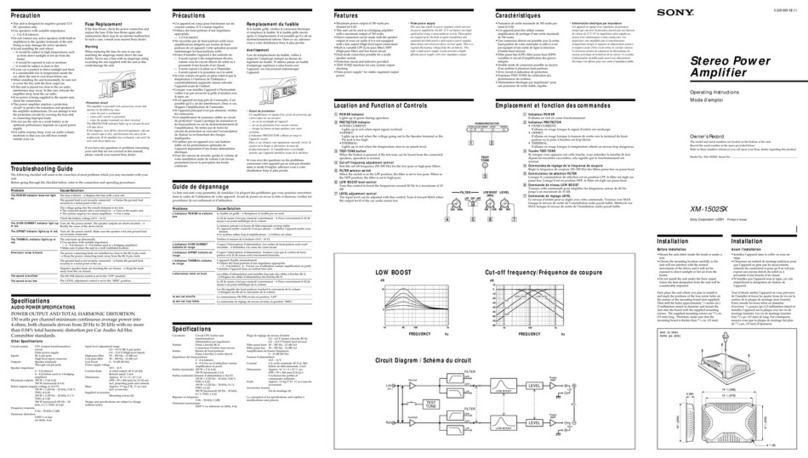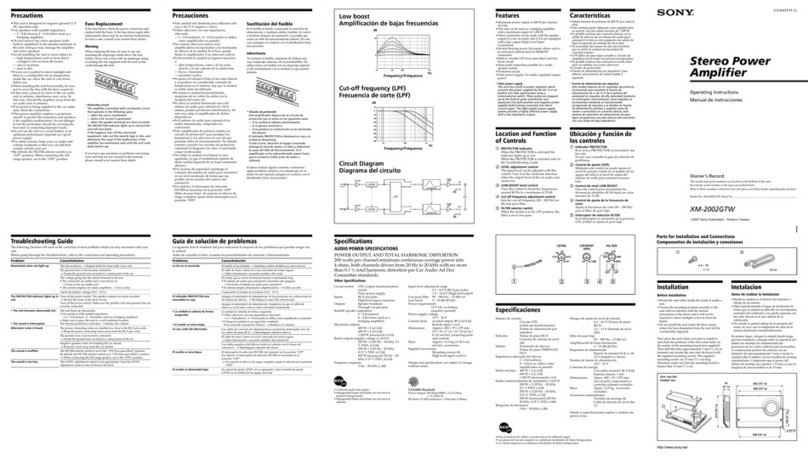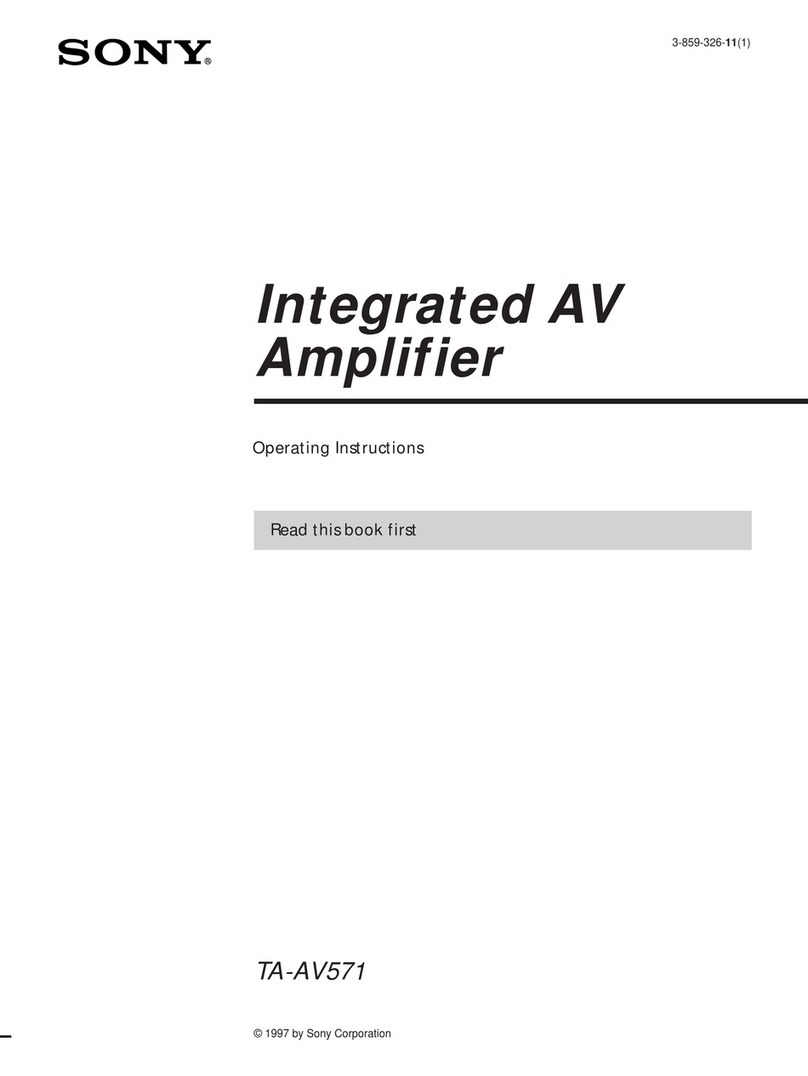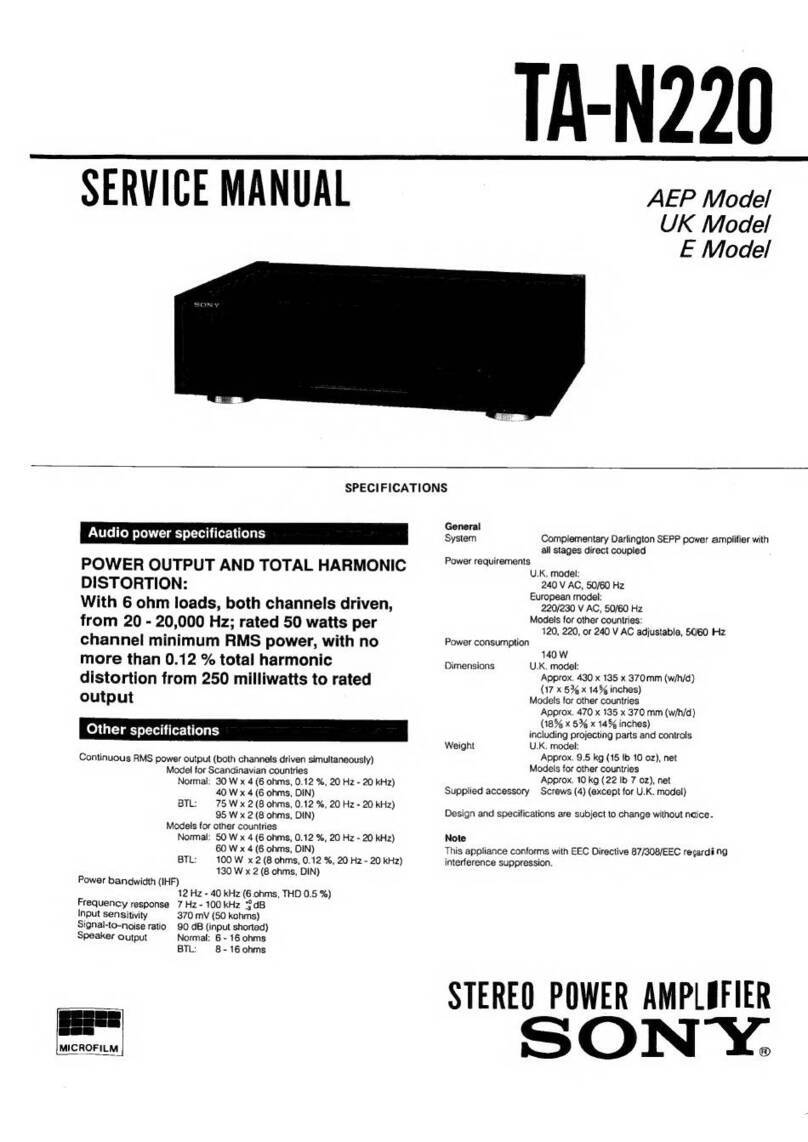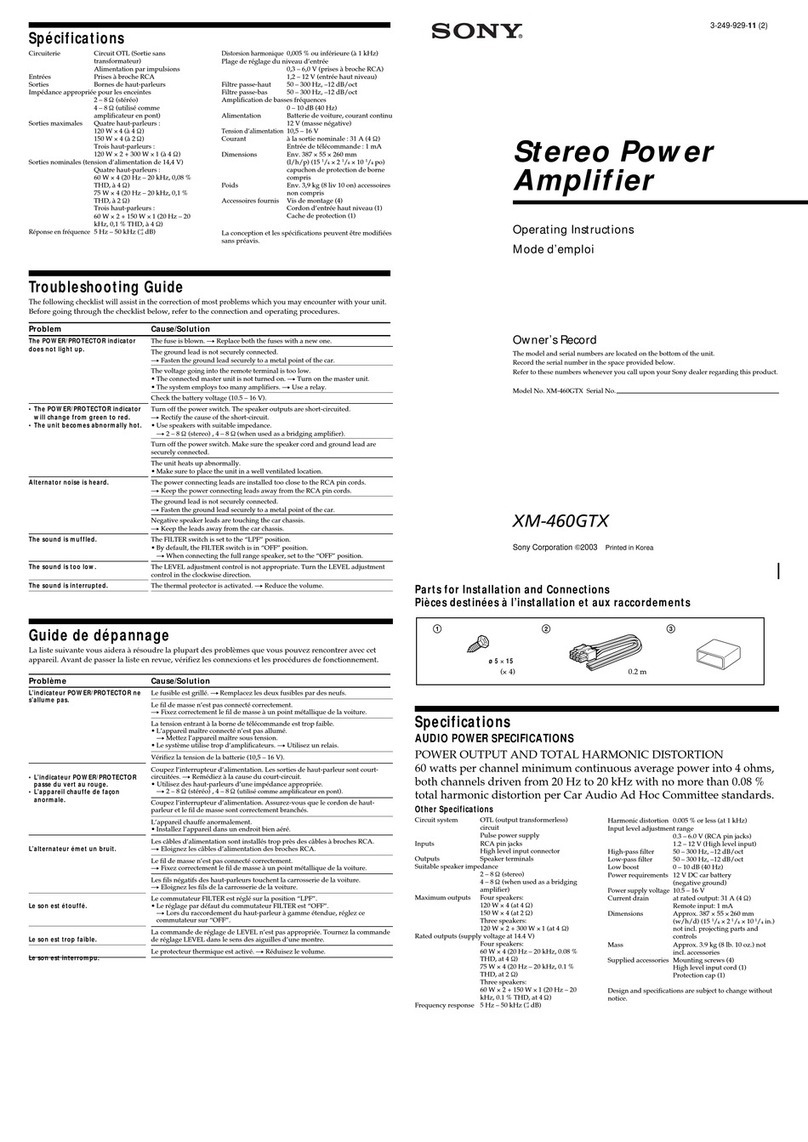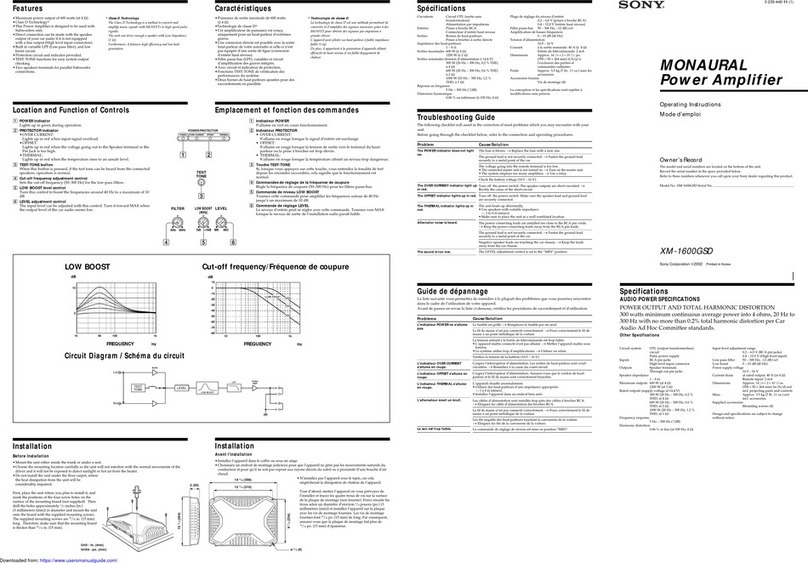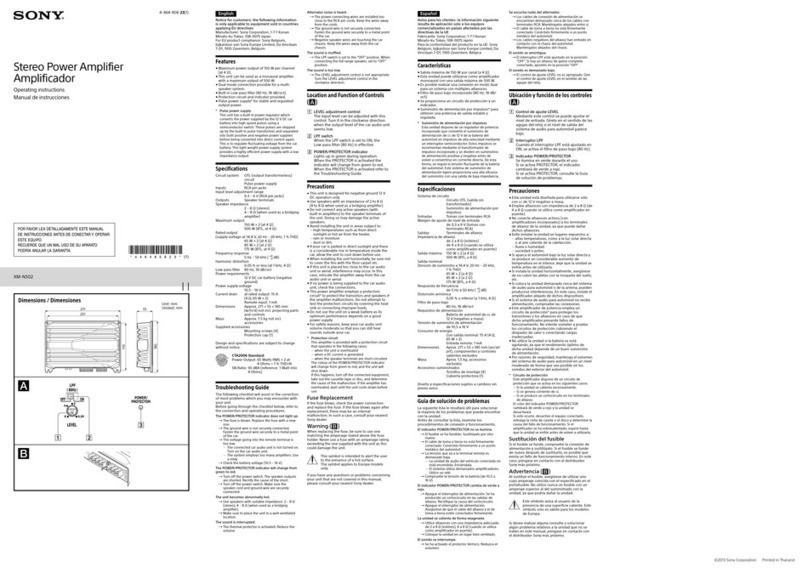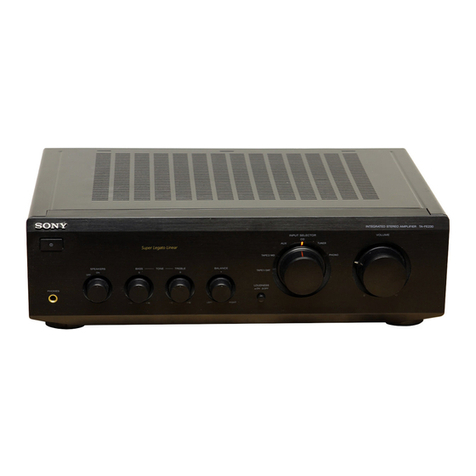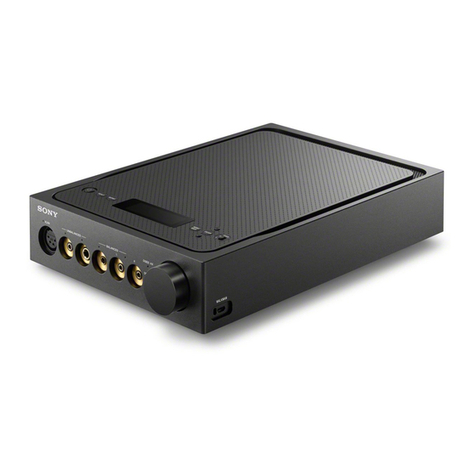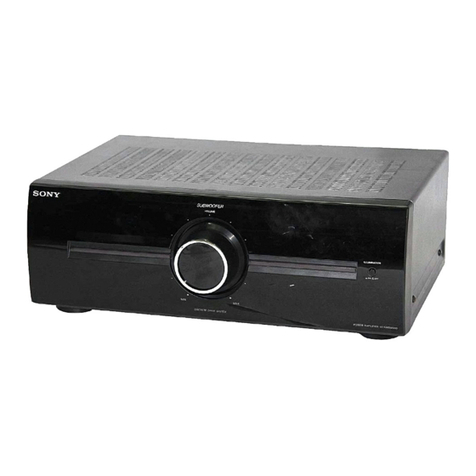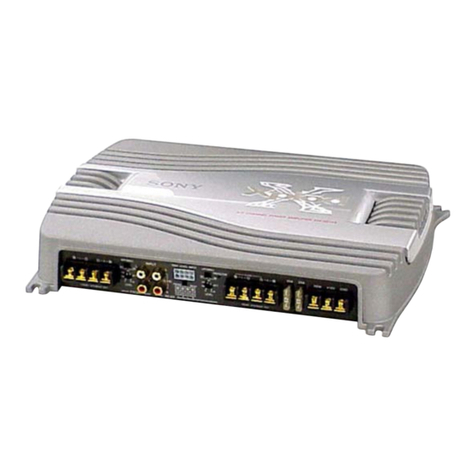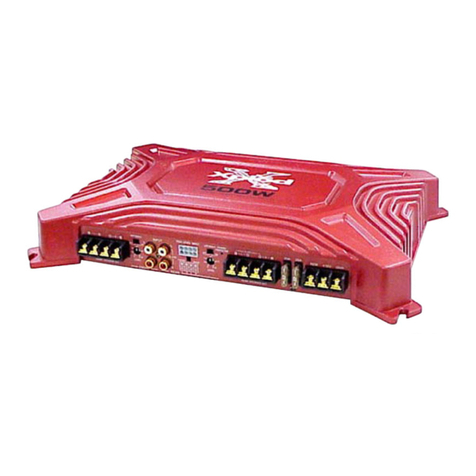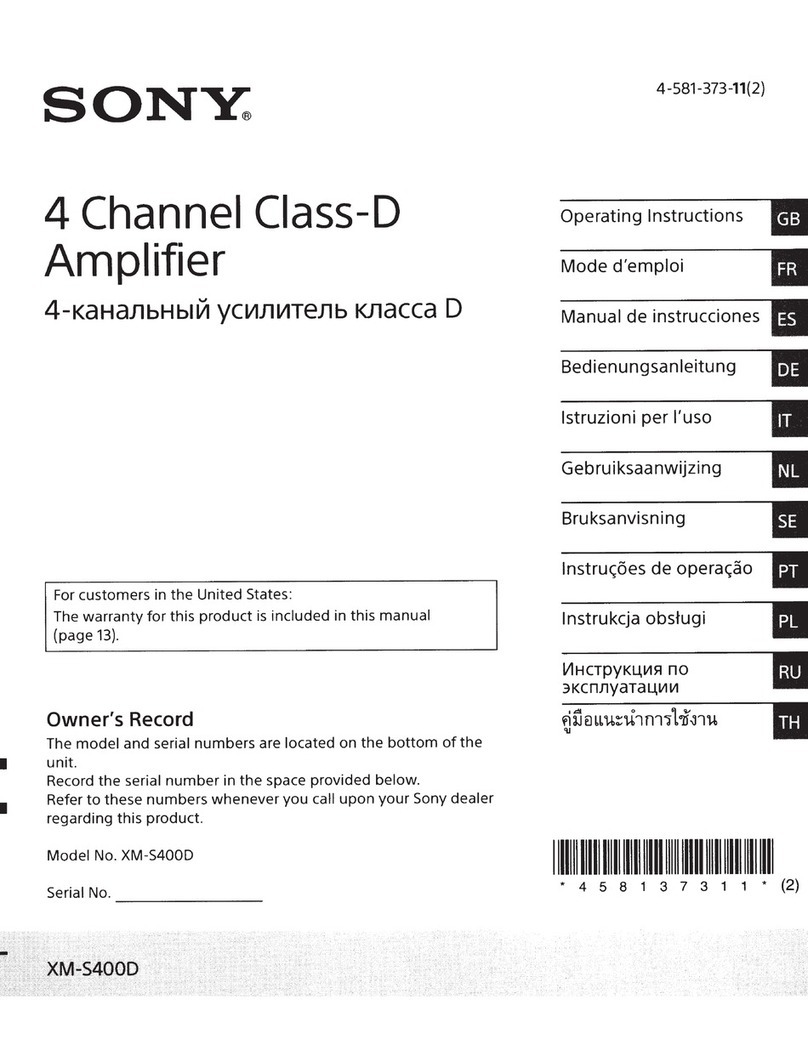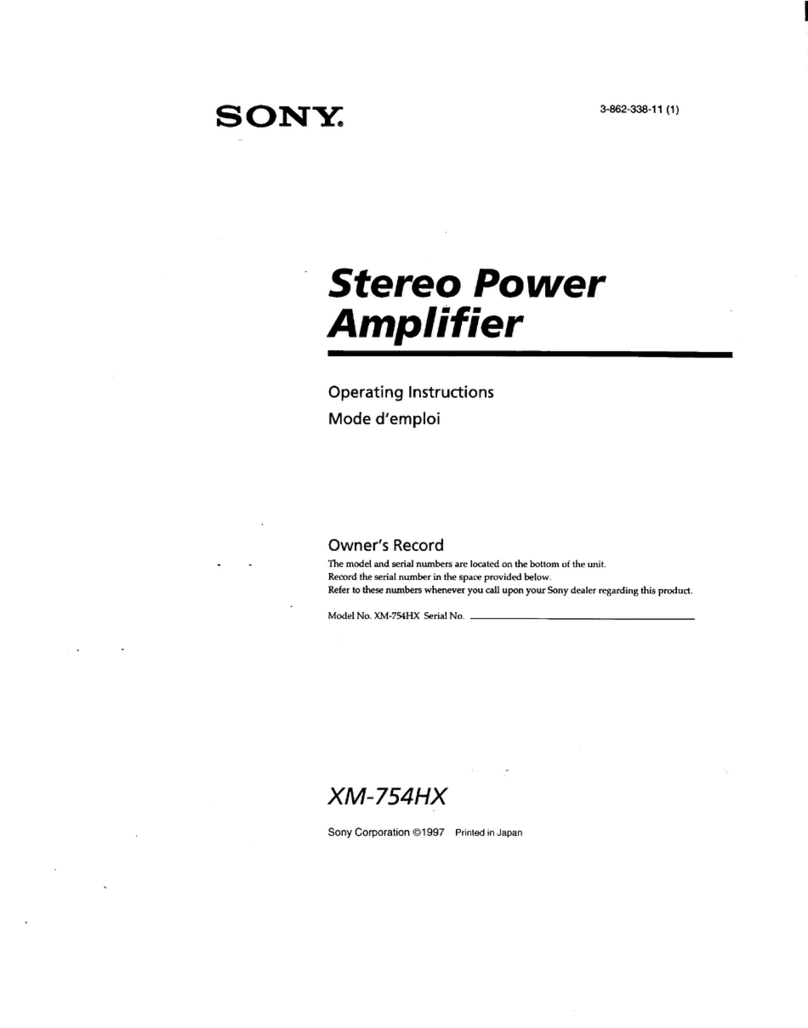3
TA-DA9000ES
1. SERVICING NOTES ............................................... 5
2. GENERAL
Location of Controls ....................................................... 9
3. DISASSEMBLY
3-1. Disassembly Flow ........................................................... 11
3-2. Case (Top)/(Side-L)/(Side-R) ......................................... 12
3-3. Bracket (J)/(P-B) ............................................................. 12
3-4. AMP Board Block........................................................... 13
3-5. COMPONENT Board Section........................................ 13
3-6. S-VIDEO/VIDEO Board Block ..................................... 14
3-7. SUB Board, PREOUT Board, MAIN Board.................. 14
3-8. I. LINK Board, DIGITAL Board .................................... 15
3-9. MOTHER Board Section ................................................ 15
3-10. MOTHER Board ............................................................. 16
4. TEST MODE.............................................................. 17
5. ELECTRICAL ADJUSTMENTS......................... 20
6. DIAGRAMS
6-1. Block Diagram – AUDIO INPUT Section – ................. 23
6-2. Block Diagram – A/D CONVERTER Section – ........... 24
6-3. Block Diagram – DIGITAL INPUT Section –.............. 25
6-4. Block Diagram – I. LINK Section –.............................. 26
6-5. Block Diagram – DSP Section – ................................... 27
6-6. Block Diagram – DIGITAL AUDIO Section – ............. 28
6-7. Block Diagram – AUDIO OUTPUT Section – ............. 29
6-8. Block Diagram – POWER AMP Section – ................... 30
6-9. Block Diagram – VIDEO INPUT/OUT Section – ........ 31
6-10. Block Diagram – COMPONENT VIDEO Section – .... 32
6-11. Block Diagram – DISPLAY/CONTROL Section – ...... 33
6-12. Block Diagram – POWER SUPPLY Section – ............. 34
6-13. Note for Printed Wiring Boards
and Schematic Diagrams ................................................ 35
6-14. Printed Wiring Board
– DIGITAL Board (Component Side) – ......................... 36
6-15. Printed Wiring Board
– DIGITAL Board (Conductor Side) –........................... 37
6-16. Schematic Diagram – DIGITAL Board (1/11) –........... 38
6-17. Schematic Diagram – DIGITAL Board (2/11) –........... 39
6-18. Schematic Diagram – DIGITAL Board (3/11) –........... 40
6-19. Schematic Diagram – DIGITAL Board (4/11) –........... 41
6-20. Schematic Diagram – DIGITAL Board (5/11) –........... 42
6-21. Schematic Diagram – DIGITAL Board (6/11) –........... 43
6-22. Schematic Diagram – DIGITAL Board (7/11) –........... 44
6-23. Schematic Diagram – DIGITAL Board (8/11) –........... 45
6-24. Schematic Diagram – DIGITAL Board (9/11) –........... 46
6-25. Schematic Diagram – DIGITAL Board (10/11) –......... 47
6-26. Schematic Diagram – DIGITAL Board (11/11) –......... 48
6-27. Schematic Diagram – MAIN Board (1/3) – .................. 49
6-28. Schematic Diagram – MAIN Board (2/3) – .................. 50
6-29. Schematic Diagram – MAIN Board (3/3) – .................. 51
6-30. Printed Wiring Board
– MAIN Board (Component Side) – .............................. 52
6-31. Printed Wiring Board
– MAIN Board (Conductor Side) – ................................ 53
6-32. Printed Wiring Board
– SUB Board (Component Side) – ................................. 54
6-33. Printed Wiring Board
– SUB Board (Conductor Side) – ................................... 55
6-34. Schematic Diagram – SUB Board (1/2) – ..................... 56
6-35. Schematic Diagram – SUB Board (2/2) – ..................... 57
6-36. Printed Wiring Board
– I. LINK Board (Component Side) – ............................ 58
6-37. Printed Wiring Board
– I. LINK Board (Conductor Side) –.............................. 59
6-38. Schematic Diagram – I. LINK Board (1/4) –................ 60
6-39. Schematic Diagram – I. LINK Board (2/4) –................ 61
6-40. Schematic Diagram – I. LINK Board (3/4) –................ 62
6-41. Schematic Diagram – I. LINK Board (4/4) –................ 63
6-42. Printed Wiring Board – PREOUT Board – ................... 64
6-43. Schematic Diagram – PREOUT Board – ...................... 65
6-44. Printed Wiring Board – VIDEO Board –....................... 66
6-45. Schematic Diagram – VIDEO Board – ......................... 67
6-46. Printed Wiring Board – S-VIDEO Board –................... 68
6-47. Schematic Diagram – S-VIDEO Board –...................... 69
6-48. Printed Wiring Board
– COMPONENT Section (Component Side) –.............. 70
6-49. Printed Wiring Boards
– COMPONENT Section (Conductor Side) – ............... 71
6-50. Schematic Diagram
– COMPONENT Section (1/4) –.................................... 72
6-51. Schematic Diagram
– COMPONENT Section (2/4) –.................................... 73
6-52. Schematic Diagram
– COMPONENT Section (3/4) –.................................... 74
6-53. Schematic Diagram
– COMPONENT Section (4/4) –.................................... 75
6-54. Printed Wiring Board
– MOTHER Board (Component Side) – ........................ 76
6-55. Printed Wiring Board
– MOTHER Board (Conductor Side) – .......................... 77
6-56. Schematic Diagram – MOTHER Board (1/3) –............ 78
6-57. Schematic Diagram – MOTHER Board (2/3) –............ 79
6-58. Schematic Diagram – MOTHER Board (3/3) –............ 80
6-59. Schematic Diagram – AMP Board (1/5) – .................... 81
6-60. Schematic Diagram – AMP Board (2/5) – .................... 82
6-61. Schematic Diagram – AMP Board (3/5) – .................... 83
6-62. Schematic Diagram – AMP Board (4/5) – .................... 84
6-63. Schematic Diagram – AMP Board (5/5) – .................... 85
6-64. Printed Wiring Board
– AMP Board (Component Side) – ................................ 86
6-65. Printed Wiring Board
– AMP Board (Conductor Side) – .................................. 87
6-66. Printed Wiring Board – FCOIL Board – ....................... 88
6-67. Schematic Diagram – FCOIL Board – .......................... 89
6-68. Printed Wiring Board – RCOIL Board –....................... 90
6-69. Schematic Diagram – RCOIL Board –.......................... 91
6-70. Printed Wiring Boards – SP Section –........................... 92
6-71. Schematic Diagram – SP Section – ............................... 93
6-72. Printed Wiring Board – DISPLAY Section – ................ 94
6-73. Schematic Diagram – DISPLAY Section – ................... 95
6-74. Printed Wiring Boards – PANEL Section – .................. 96
6-75. Schematic Diagram – PANEL Section – ....................... 97
6-76. Printed Wiring Board
– DC Board (Component Side) – ................................... 98
6-77. Printed Wiring Board
– DC Board (Conductor Side) – ..................................... 99
6-78. Schematic Diagram – DC Board – ............................... 100
6-79. Printed Wiring Board – AC Board –............................. 101
6-80. Schematic Diagram – AC Board –................................ 102
6-81. IC Pin Function Description .......................................... 119
TABLE OF CONTENTS

